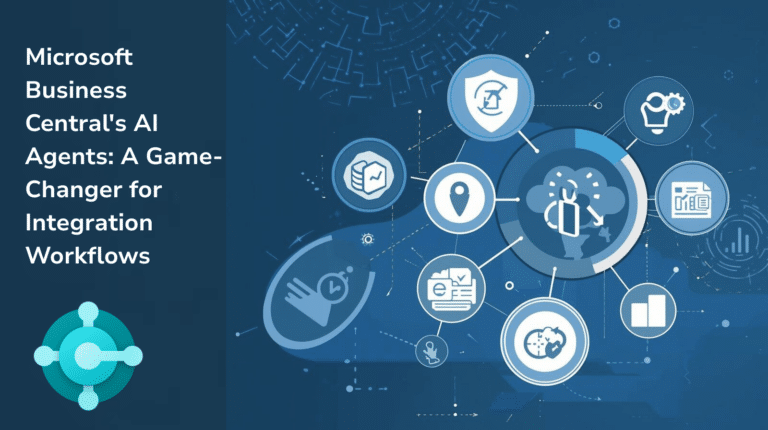In an era where economic uncertainty looms large, businesses are discovering that digital transformation isn’t just a buzzword or LinkedIn hashtag – it’s a critical strategy for their very survival.
The global economy creaked out of the COVID-19 pandemic on tenterhooks. The outbreak of war in Europe for the first time since 1945 crystalised creeping inflation that had stalked the economy out of the pandemic, sending European energy markets into turmoil. The added strain of Brexit to UK businesses pushed marginal profits for some underwater; others had to rapidly alter course to navigate increasingly treacherous economic times.
Against this backdrop, as businesses try to peer off into a murky future, it has never been more important for firms to build-in resiliency through every means available to them, to weather whatever economic shocks lie in store as winter looms. Above all else, this puts cost-savings front and centre – are businesses able to do more, with less, and do it now, while the auspices are still mostly in their favour?
Luckily, the short answer is yes.
Digital transformation is one way a business can realign its fundamental operating principles to streamline its operations, slim down its processes and leave it a leaner, meaner, more resilient beast, capable of withstanding external pressures.
What is Digital Transformation?
Digital transformation is the integration of digital technology into all areas of a business, fundamentally reshaping how it operates and delivers value to customers. It allows for the automation of manual tasks that were once time-consuming or awkward. Just as the typewriter saved secretaries time (and training!) on using shorthand to record information, word processors like Microsoft Word allowed typists to not only type even faster but to edit their documents in real-time. Digitising a task as simple as writing a document not only made it more convenient for the employee creating said document, but computing technology allowed that document to be copied, shared, edited and collaborated on by an entire organisation with just a few clicks of a mouse.
Digital transformation continues to reshape everyday working life in too many ways too count, with the same potential for time and cost-savings that the evolution from the written word to word processors saved businesses.
Key examples of modern-day developments in digital business technology include:
Enterprise Resource Planning (ERP) – A consolidated suite for integrating and automating key business processes, allowing for real-time insights and data harvesting across an entire organisation for sharper decision-making. With the potential to automate everything from the sales pipeline to stock and inventory management, this cuts down on man-hours required for mundane, repetitive data entry tasks and allows your team to put that time towards productive, value-adding tasks instead.
Customer Relationship Management (CRM) – An automated system for handling outside relations at every step of the marketing and sales process, from first contact to upselling after closing an initial deal. This not only makes reporting by sales teams a lot less hassle, but provides executives with at-a-glance insights into sales turnover and deal status.
Internet of Thing (IoT) – This extends your internal computer network to include factory-floor machinery and other physical assets. By utilising sensors on your machinery, raw data can be scraped from your shop floor concerning everything from machine efficiency, temperature, yield output, defects, etc. This not only allows a clearer-than-ever level of data insight into the working of your factory, but allows for ERP implementation like automated stock level management, ramping up/ramping down of production in line with dynamic datapoints such as orders processed or market prices of raw input materials and output goods, or allowing for predictive maintenance when sensors detect anamolies in a piece of machinery’s readings.
Cloud Computing – Already extremely popular in most work intranets, cloud computing allows for the seamless sharing of files and information, as well as real-time collaboration on documents. It allows for off-site storage of data, allowing workers across a decentralised organisation to access the same files from any location, even when working from home. This allows for rapid scaling of operations and flexible business structures.
Can Digital Transformation Save Your Business Money?
All of this sounds fantastic on paper (or your phone screen, in our increasingly digitally-transformed society!) – but does it actually save YOU money?
Against the backdrop of ramping uncertainty in business outlook, what does digital transformation actually do to help firms cut down on expenditure?
Operational Efficiency – Digitally streamlining your business’ core processes and workflows cuts down dramatically on labour hours required for mundane, repetitive tasks, like data entry, that do not immediately add value to your business. This frees up your existing workforce to log more time directly working towards you business’ key metrics and goals. Less time reporting on outcomes and more time spent chasing those very outcomes.
Reduced Overheads – Digitising documents or workflows pertaining to documents allows for less investment in physical infrastructure, while automating processes such as maintenance alarms from data scraped from IoT sources allows machinery to be maintained before malfunctions grow to be more costly, or shut the machine down.
Enhanced Productivity – Freeing up labour from repetitive internal tasks allows them to focus on thinking and working strategically. With the everyday stuff automated for them, your workers have the time to plan and organise on a much more high-level scale, and to drive towards your organisation’s goals.
Data-Driven Decision-Making – Access to invaluable data insights pulled from across your entire organisation, from shop-floor machinery to the real-time sales pipeline, equips management with unfiltered and uncompromising situational awareness about their business operations. This allows for clear-sighted and incisive decisions to be made backed by data, to steer the company and make timely and effective financial decisions about its future.
How can Digital Transformation help Firms Navigate Uncertain Economic Waters?
Cost-savings are the first step on the way to building resilience in uncertain economic times. Digital transformation helps firms achieve that; but it goes far beyond simple penny-pinching.
Cloud-based systems and infrastructure provide for business continuity no matter the circumstances, with core business functions available to anyone with access and a laptop or smartphone. This could allow, in extremis, a business to forego a physical infrastructure at all and disperse its operations across a work from home policy, saving money on office space and other physical necessities.
Digitally transforming core processes and introducing digital technology into everyday operations also helps to future-proof businesses in a climate of rapidly advancing technological progress. Investing in technology now, while times remain stable, means the infrastructure and systems will already be in place five or ten years down the line, come what may. The savings in cost and efficiency made today will still be making themselves felt in a decade, no matter what happens beyond the scope of the organisation.
How is a Digital Transformation Program Implemented?
So what does a digital transformation process actually involve, and what are the steps to getting one implemented in your organisation?
Discovery Phase – The very first step on the road to overhauling your business, is to understand it. A robust discovery phase allows outside consultants – such as Target Integration – to get up to speed on the people, processes and technology that make your business hum. This cuts two ways – a digital assessment is also an opportunity for managers to refresh their own understanding of the way their business works and discover for themselves ways they would implement positive improvements across the organisation.
Strategy Development – With the processes and workflows of a business mapped out, and areas for improvement identified, solutions can now be highlighted for the automation and digitisation of these processes. This consists of two fundamental approaches: the digital transformation consultants can draw on their own deep well of experience to identify solutions that worked for other businesses in the past, and put those into effect in this digital roadmap; and stakeholders in the business can highlight specific needs unique to their situation that they would like to see addressed. This is where software agnosticism and a capacity for custom development can make itself felt, where solutions can be fine-tuned to match the specific needs of a business.
Implementation – Of course, that just leaves the actual implementation of the digital transformation itself. With the course laid in and strategy mapped out, the process of integration your business’ systems with a newly digitised software solution can begin, with your team being trained up along the way in the use and management of this new solution. This also involves the careful migration of existsing data into the new system to be implemented, ensuring nothing of value is lost along the way. Implementation can be a lengthy process, and it pays if it remains flexible and dynamic throughout – being capable of adjusting on the fly for unforeseen circumstances or new requirements means you are assured that you are left with a system that does what you need it to once all is said and done.
Monitoring & Optimisation – Post-implementation support is critical to the successful adaptation of a new system. This doesn’t just allow your team to ask questions and receive training post-launch to make them each an expert in your new system, but allows developers to respond quickly to any issues that arise or new requirements that need to be implemented. Most of all it allows careful fine-tuning of the finished article to respond to new information as time progresses, to make sure your system is tailored to the very specific needs of your business and customers.
Make Cost-Savings Today – Book Time with a Target Integration Digital Transformation Consultant!
Take steps now to ensure your firm’s resilience in uncertain economic times. Get in touch with one of our digital transformation consultants and discover how automating and digitising your business processes could save you time and money while boosting your business’ productivity and growth!



